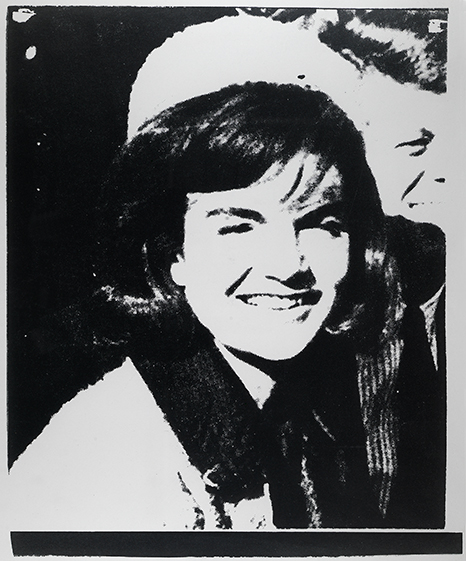Jackie I
Andy Warhol (1928–1987)
Serigraph, 1966

Smithsonian American Art Museum, Washington, D.C. © 2013 The Andy Warhol Foundation for the Visual Arts, Inc./Artists Rights Society (ARS), New York
Shortly after President John F. Kennedy’s assassination on November 22, 1963, Andy Warhol, utilizing various press photographs of the event, began a series of paintings and silkscreen prints of the young widow. This smiling face of Jacqueline Kennedy (1929–1994) was a cropped and flipped version of a Wide World photograph of the Dallas motorcade with the president’s profile barely discernible in the background. Jackie I’s other visual referent is television. Printed in an evanescent silver ink that changes with the viewer’s angle of vision, the silkscreen surface shimmers like a TV screen endlessly repeating the horrifying scenario. Warhol, in addition to his distinctive commercialized aesthetic, brought to portraiture an unusual juxtaposition of themes, including, in this case, celebrity, tragic death, a highly charged news event, decoration, and consumerism. He translated the glamorous first lady into a commodified icon upon whom varied details of the American story could be projected.

